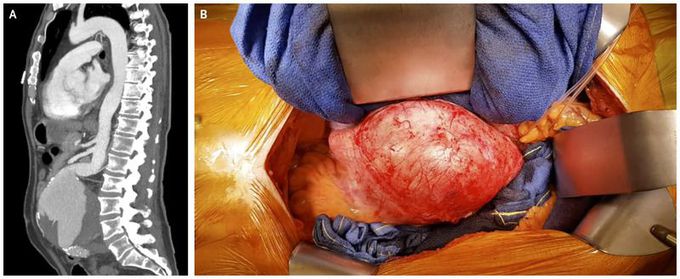


A Pulsatile Abdominal Mass
A 66-year-old man presented to the emergency department with a 2-month history of abdominal bloating and worsening constipation. His medical history was notable for untreated hypertension and hyperlipidemia. He had been an active smoker for more than 20 years, and his father had died suddenly at 62 years of age from an unknown cause. The patient’s blood pressure was 162/83 mm Hg, and the physical examination revealed a painless pulsatile abdominal mass. The femoral pulses were palpable on both sides. Computed tomographic angiography revealed a large fusiform infrarenal aortic aneurysm measuring 11 cm by 10.5 cm by 14 cm (Panel A). The patient underwent surgery, during which the aneurysm was exposed (Panel B ) and replaced with an aortobiiliac graft. He also began medical treatment for hypertension and hyperlipidemia. At a 6-month follow-up visit, the patient had no pulsatile abdominal mass, had good perfusion to his legs, and felt well.
Unlike this person, my grandfather died 3 hours after surgery due to severe internal haemorrhage.
Breastfeeding and Medications IIAce Your Respiratory Examination OSCE - With This Clinical Skills Master Class - Dr GillAbdominal Examination - Clinical Skills - Medical School Revision - Dr GillDoctor Explains: How to PURIFY Smokers Lungs!BronchitisPreparation for USMLEEffects of sugar on teethNeurofibromatosis


